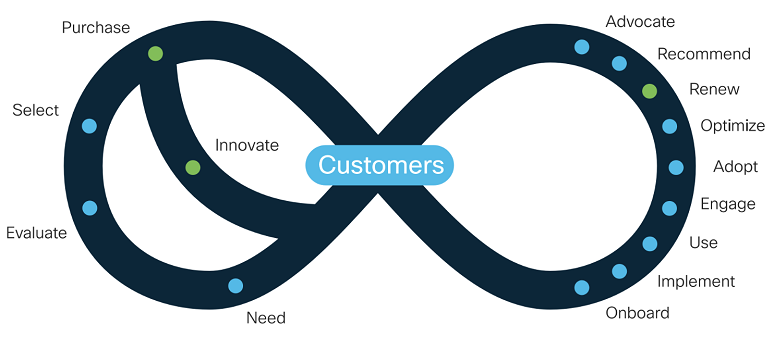In this industry, when the words “customer experience,” or “CX,” are uttered, we often think of contact center -- but there’s a whole lot more to CX than cloud-based, omnichannel contact centers. In the context of Cisco Services, for example, CX relates to ensuring customer success with Cisco technology -- and the company has formalized that in the newly named
Customer Experience organization.
In actuality, Cisco Services has always been success-focused, with a “get the job done at all costs” mentality. Over the years, I’ve had some long conversations about this with former Cisco COO, Gary Moore, who also ran the services business at one time. Cisco has always tried to put customer success first, whether the issue stems from its products or not. Pointing the finger elsewhere doesn’t help the customer solve its problem, after all.
I experienced this CX approach numerous times when I was a Cisco customer and reseller. Whenever I reached out to Cisco’s technical assistance center (TAC) for “network down” issues, the engineers would step up, even if the problem wasn’t on Cisco’s side. Back in the day, I talked to more Cisco engineers about Microsoft and Novell network issues than I did to tech support at those companies. This is because interactions with Cisco TAC were always low-friction; I got to speak with experts immediately, and stuff like service agreement number or credit card information got sorted out after the call was done.
This model has worked well for Cisco and its customers for years -- but now, Cisco says, it’s time for a change. Why? In the words of Bob Dylan, “The times they are a-changin,” and that necessitates new approaches, even to things that appear to be fine.
For all the success that Cisco Services has had, the organization is largely reactive in nature -- a customer calls with a problem, and engineers fix it. But you could argue that if the technology had been optimized in the first place, the problem might not have occurred at all -- and that’s the aim of the Customer Experience group, headed up by Maria Martinez, EVP and chief customer experience officer, who joined Cisco a little under a year ago. She has deep experience in this area, with previous roles including president of customer success at Salesforce and GM of global services for Microsoft.
Martinez has designed the CX organization to be proactive, with services oriented around the customer. The approach inserts Cisco services help at every step of the technology lifecycle to ensure projects are successful. IT projects are growing increasingly complex and require many more moving parts than ever before. Many digital initiatives include a wide range of technology, specific to the Internet of Things, cloud, mobility, network, data center, and more. For many organizations, cobbling these components together is overwhelmingly difficult. Add in that IT leaders are under tremendous pressure to move faster so the company can keep up with its peers. The combination of complexity and speed is a recipe for disaster. The previous approach would have helped a customer if a problem popped up; Cisco CX is designed to minimize the likelihood that one will.
I don’t want to paint Cisco’s existing services as purely reactive. The company has shifted to a service-led model and does offer a number of proactive services, but delivery is ad hoc. As the graphic at top shows, Cisco is now inserting services at every step of the technology lifecycle to streamline delivery and make engagement results more predictable to ensure its ability to meet business outcomes.
In addition, Cisco is bolstering its ability to deliver continuous improvement by taking advantage of the massive amount of data it has amassed. As an example, its Business Critical Insights platform analyzes telemetry data to provide prescriptive and predictive insights that can be put to use in reducing downtime and improving efficiency within an environment.
Services like this are extremely popular with customers and generally lead to more business. For example, Amazon Web Services (AWS) has a wide range of optimization services designed to ensure that customers are spending their money wisely. The net result is that customers that use the optimization services indeed do tend to spend more.
The revamping of the services business is overdue, particularly for a company with the footprint Cisco has in most of its customers. Cisco has ramped up the innovation engine and is delivering more technology faster than ever. If it wants its customers to adopt the new stuff, customer success is imperative, and Cisco CX is designed to ensure businesses can be aggressive with technology without putting themselves at risk.










